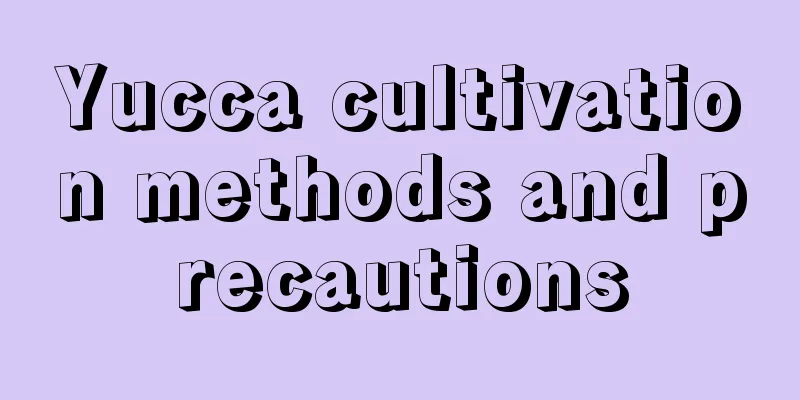Cultivation methods and precautions of striped Haworthia

Fertilizer and water requirementsThe striped Haworthia is very drought-resistant and can grow well in arid environments, but this does not mean that it does not need watering and fertilizing. Because the roots are afraid of waterlogging, if there is water accumulation in the pot or too much water and fertilizer, the roots will easily rot. Therefore, when watering and fertilizing, you must adhere to the principle of alternating between dry and wet, dry the soil thoroughly, do not water if it is not dry, and water thoroughly if it is dry. Water the plants the next day after fertilizing to promote the absorption of fertilizer. Avoid getting the plants wet when watering. Temperature requirementsThe most suitable temperature for the growth of Haworthia is 15~32℃. It is afraid of high temperature and will enter a dormant period when the temperature exceeds 33℃ in summer. The wintering temperature must be controlled above 10℃. If the temperature drops below 7℃ in winter, it will enter a dormant state. If the environment is close to 4℃, the plant will be frozen and die. Lighting requirementsIn spring and autumn, the temperature is not very high, and the Haworthia is in its growing season. It can be exposed to direct sunlight, and photosynthesis can promote the accumulation of nutrients. In summer, the plant should be placed in semi-shade or outdoors in 50% shade, the leaf color will be more beautiful. In winter, place the plant in a bright room, pay attention to controlling the temperature, and rotate the direction of the flowerpot frequently to ensure that the plant receives even light. Humidity requirementsThe striped Haworthia prefers a relatively dry environment and is easily infected by pests and diseases on continuous rainy days. Plants that are afraid of rain should be kept outdoors under shelter. Don't forget to water the leaves at night to keep them dry. The most suitable air humidity is 40~60%. When the humidity is not enough, humidify it by sprinkling or spraying water. Reproduction methodThe division method can be combined with repotting. This can be done throughout the year, usually when repotting in April or May, by peeling off the young plants around the mother plant and planting them directly in pots. After dividing the plant into pots, place the pot in a shaded place and control watering. After new roots grow, gradually increase the amount of light and watering. The potting soil should be a mixture of 2 parts leaf mold and 1 part river sand, and add an appropriate amount of bone meal or superphosphate as base fertilizer. Spring and autumn are the vigorous growing seasons every year, so watering should be moderate, and the soil in the pot should be relatively dry. Too much watering can easily cause root rot, and the amount of fertilizer needed at this time is relatively large. Generally, compound fertilizer should be applied once every 3 weeks. Summer is the dormant period, so watering should be controlled and proper shading should be paid attention to. The temperature in winter is maintained above 10°C, and the amount of watering should be appropriate to keep the soil in the pot dry. Low temperature and large amount of watering will cause the leaves to wilt and the plant to die. Cuttings: Gently cut off the fleshy leaves in May - June , leaving the semi -lignified part at the base, and insert them into the sand bed. They will take root in about 20-25 days . When the roots are 2-3 cm long , they can be potted. Breeding precautionsFor Haworthia plant grown indoors, try to place it near the southeast doors and windows so that it can receive sunlight. Move it outdoors for a period of time every half a month or a month. Even if there is plenty of sunlight indoors for a long time, the leaves will become thinner and the new branches and petioles will become slender. The roots of Haworthia are very sensitive and afraid of waterlogging. If water accumulates in the pot, or if watering and fertilizing are too frequent, the roots will easily rot, so watering must be controlled. When the Haworthia enters its dormant period, you need to control the amount of water and fertilizer. When watering, try to choose a sunny day at noon when the temperature is relatively high. |
<<: Does the white phoenix bloom?
>>: Which plants can be hybridized with Teyulian
Recommend
Why do succulent leaves become soft?
1. The leaves of the newly potted succulents beco...
How to take cuttings of rose buds in spring
1. Cut the sprouts Around March in spring, you ca...
How to grow sweet alyssum with many flowers
Water and fertilizer management of sweet alyssum ...
How to grow gladiolus in water
Selection If you want gladiolus to grow well in w...
Is bougainvillea suitable for deep or shallow pots?
Is bougainvillea suitable for deep or shallow pot...
How to keep seeds of Polygonatum sibiricum and how to collect and store them
How to get Polygonatum sibiricum seeds Polygonatu...
The difference between chrysanthemum and gesang flower
1. Differences in the stems The stem of Chrysanth...
What fertilizer to use for mint? Two things to pay attention to when fertilizing mint
1. Base fertilizer When planting mint, you need t...
Can cyclamen be grown hydroponically?
Cyclamen can be grown hydroponically Cyclamen can...
The growth environment and local conditions of Populus euphratica
Populus euphratica growth environment and conditi...
Can camellia be planted in the ground?
Can camellia be planted in the ground? Camellia c...
How to prune honeysuckle in winter
Winter pruning time Honeysuckle is very cold-resi...
Can Begonia bloom in winter?
Tip 1: Flower Pots and Soil The choice of flower ...
How to make lemon seeds germinate quickly? How long does it take for the seeds to germinate?
Lemon Seed Germination Method Step 1 : Select a r...
How to grow money trees and banyan trees, what are the differences?
1. Breeding methods 1. Light: Both are light-lovi...









